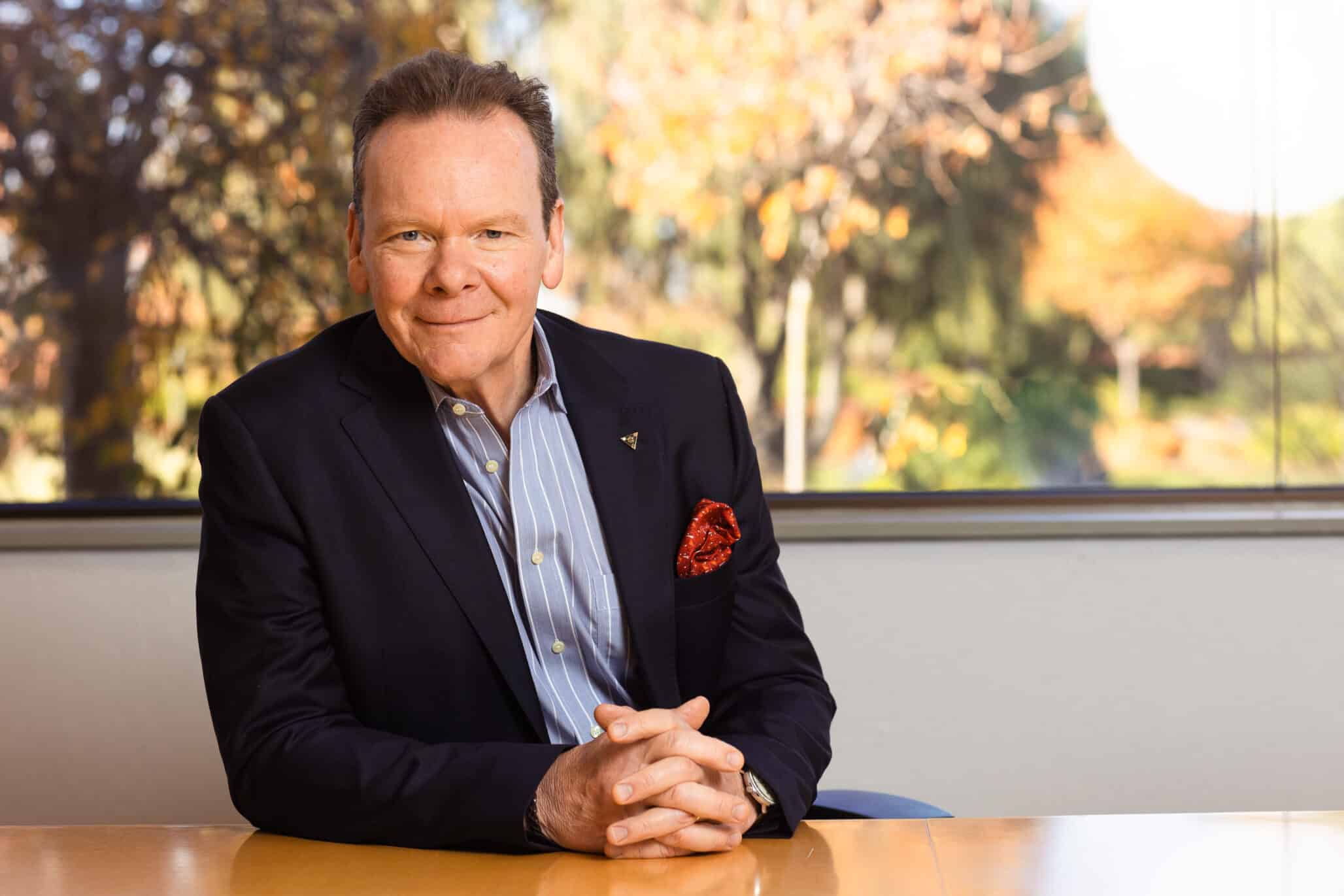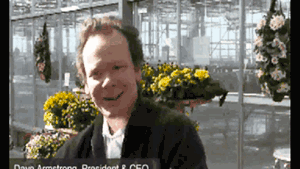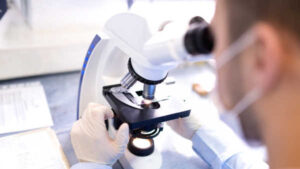He says the industry needs to focus on the consumer and diversity in the industry.
Japanese-founded Sakata is etching significant mark in U.S. soils. David Armstrong is at the helm of its American operations. He is a visionary leader whose insights and strategies have propelled the company in areas of innovation and success. Armstrong said he’s proud that Sakata’s rich history of endurance and perseverance is helping the industry solve today’s challenges.
“Sakata’s parent company in Japan was founded 110 years ago,” Armstrong says. “In 1977, Sakata made their first step outside of Japan, setting up a production company in California.”
He says the expansion was more than geographical; it represented a strategic shift toward global market engagement.
“The idea was to produce mainly broccoli seed for Japan,” Armstrong recalls. “They had limited business outside of Japan at that time.”
Armstrong says Sakata’s growth in the U.S. is a tale of adaptation and foresight.
“We are focused in vegetables and flowers,” Armstrong explains. “Sakata was founded mainly as a flower breeding company, back in the day. However, U.S. operations have largely veered towards vegetable breeding and production, which is a testament to the company’s ability to respond to market demands and trends.”
On Sakata’s website, Armstrong’s statement about the company mentions the value of being in business for more than a century: “Sakata has survived world wars, economic crises and natural disasters to continuously create new standards in global vegetable and ornamental markets,” he stated on the site. “In a marketplace characterized by intensive consolidation, Sakata stands as a symbol of independence, innovation and reliability. It matters to our customers, who have become partners … realizing value in their businesses from our innovation.”
That statement guides the way he interacts with his colleagues and partners across the seed industry.
Labor Issues Prevail
Amid all the success and innovation, Armstrong says one of the biggest challenges for anyone in the flower and vegetable arena is labor. Horticultural work is seasonal and often very physical. The agricultural sector has experienced a significant labor shortage that has been compounded by stricter immigration policies and enforcement. These issues have reduced the influx of migrant workers, which traditionally make up a significant part of the agricultural workforce.
Armstrong speaks candidly about the challenges of agricultural labor, especially in California.
“Labor in agriculture is a huge, difficult issue,” he says. “A significant portion of workers are undocumented, which presents its own challenges in today’s charged political environment.”
He also highlighted the evolving landscape of agricultural work, with increasing automation playing a pivotal role. “Agriculture has been suffering from acute labor shortages, and I think that is really what’s been driving the automation,” Armstrong says. “Dramatic advances are going on in agricultural automation at the field level.”
As other industries thrive, they pull experienced workers away from agriculture.
“Agriculture is often considered the first rung on the labor ladder,” Armstrong says. “I wish it weren’t the case, but it’s reality. I would love to be able to upgrade the image of agricultural work; it’s difficult work, but it’s also very necessary work. When the economy is growing in other areas, workers leave ag as soon as they can get into something else.”
He says the labor shortage is a driving factor in agricultural automation, even calling it a revolution.
“They [laborers] can generate pretty good compensation when the alternative for growers is leaving crops in the field and not harvesting,” he says. “The growers are willing to pay a premium to get the labor. That’s leading to dramatic advances in agricultural automation at the field level. We can’t completely replace people with automation. But we can get a lot further along than we are now. There are various initiatives underway in different crop sectors; some tasks are easier to automate than others. Vegetables and horticulture crops will probably be the last mile, but a lot is going on. I think we’ll see a lot more automation in the next 10 years.”

New Breeding Technologies Foster Growth
New breeding technologies are playing and will continue to play a large role in flower and vegetable production. Armstrong points out the differences between field crop and vegetable research.
“It’s a question of scale,” he explains. “We can typically aim high-cost, highly technical breeding technologies at the agronomic crops in a way that’s difficult to do in vegetables or horticultural crops. Just because of scale.”
However, he adds that technological advancements are closing this gap, with gene editing and AI offering significant potential.
“This whole genomic revolution where, for example, we’ve mapped the pepper genome and the spinach genome, among others, allows a lot of marker breeding to be going on in these crops and enables other biotech advances as well. As these technologies are deployed in breeding vegetable and flower crops we’re all trying to figure out what that looks like over the coming years.”
Armstrong also speaks to the responsibility the industry holds in bringing innovations to the market.
“The most important thing is to develop products that appeal to the consumer,” he emphasizes. This consumer-centric approach is crucial in an era where consumer preferences and perceptions significantly influence market success.”
Understanding what consumers want is increasingly key to Sakata’s strategy.
“We spend a fair amount of time with retailers,” he says. “They’re working more with our breeders and product development teams to try and shape what they are offering to the consumer. This collaboration with retailers represents a more integrated approach to meeting consumer demands.”
Leadership is a Journey
Reflecting on his leadership journey since becoming president-CEO of Sakata Seed America in 2009, Armstrong shares his insights about time and the role it plays in developing a leader.
“Probably the biggest lesson for me has been the power of time spent in a role to educate and shape me as a leader,” he says. “Before I joined Sakata, I stayed in a role two to three years, got promoted, moved on. It was a good thing, in many ways. Yet, for various reasons, I’ve been surprised to stay in my current role for this long. We’ve done some amazing things and the business has grown significantly.”
He said time in the role allows him to see the organization changing around him, help shape its culture and be shaped by that same culture himself, while developing strong, deep relationships.
“Of course, we have turnover like everyone else,” he says. “I have this image of companies being like a river with people flowing through them. It doesn’t stay the same, but at the core there’s this group of people, and the core culture of the company is durable. It’s been enriching to look back and to have been part of that flow. I’m grateful I didn’t continue to change roles or companies every three-ish years.”
Vision for ASTA
As the current chair of the American Seed Trade Association (ASTA), Armstrong discussed his role in representing the diverse interests of the seed industry.
“ASTA is representing many commodities and different crops,” he says, emphasizing the importance of identifying common challenges and opportunities across the industry. He also highlighted the need for greater diversity within the industry.
“We’re talking more about women in agriculture, people of color and generational diversity,” he says. “This is something we need to talk about more. I think it’s very important for ASTA — for agriculture overall — to represent society at large, which is very diverse.”
Armstrong expresses his views on the industry’s needs in a new U.S. Farm Bill.
“We would like to see a focus on agricultural research specifically for the seed industry,” he says. “The free movement of seeds is very important. We want to especially alleviate non-economic trade barriers. Supporting innovation is key. The way the next Farm Bill focuses on the regulatory and legal framework is critical to things like gene editing; we need to make sure this technology is not blocked, especially for use in vegetable breeding. There are big challenges and also big opportunities.”
When he’s not leading board meetings, vital seed conversations and making important industry decisions, Armstrong enjoys the arts and in literature. He spoke fondly of his family, particularly his wife, Federica, an accomplished documentary photographer.
“She’s done some quite remarkable work,” Armstrong boasts.
Together David and Federica are parents to two adult children, a successful college baseball coach and an aspiring psychologist.













